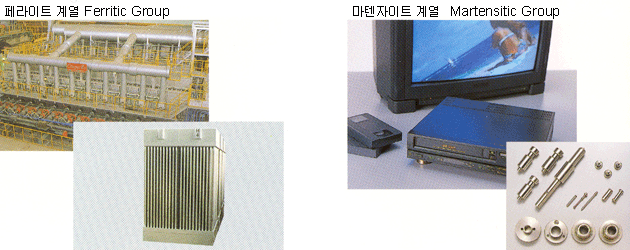
Diversified and upgraded needs for stainless Steel
- Sanyo Always meets user's needs with high quality products.
- Year of Foundation 1933. 11
- Total Works Area 815,545 m2
- Total Number of Employees 2491
- Product Line
- Bearing Steel
- Alloy Steel
- Carbon Steel
- Free cutting steels
- Stainless Steel
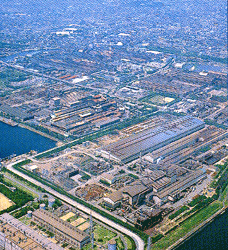
- Heat Resistance Steel
- Tool steels
- Electromagnetic materials
- Super Alloy
- Steel powder
- Monthly production
- Rod and wire 71,000 ton
- Tube and pipe 15,000 ton
- Totaly Monthly 86,000 ton
- Total Works Area 815,545 m2
|
Registered Scope |
Party |
Date Of Reissue |
Certified By |
|
Design and Development, and Production of Bars, Wires & Wire Rods and Seamless Pipes and Tubes made of Special Steels and Non-Ferrous Metals (Nickel Metal & Nickel Alloys) |
Head Office and Works, Tokyo Office, Osaka Office, Nagoya Office, Hiroshima Office, Kyusyu Sales Office |
Apr. 25, 2002 |
JICQA |
|
Production of Formed & Fabricated Products of Special Steels |
Formed & Fabricated Products Department |
Apr. 25, 2002 |
JICQA |
|
Registered Scope |
Party |
Date Of Reissue |
Certified By |
|
Activities related to the manufacturing of special steel and non-ferrous metal |
Head Office and Works |
Apr. 14, 1997 |
JICQA |

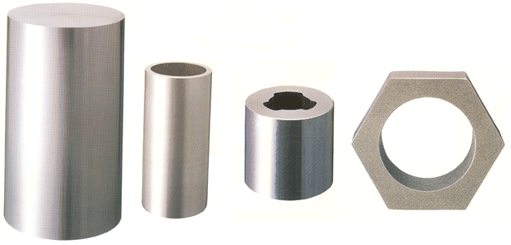
“HIGH CLEAN”, the evidence of superb technology and equipment
- High Clean Stainless Steel is a high quality stainless steel with the impurities reduced to a minimum.
- Major production techniques are
- 1. Steel making – Stabilized production by large-capacity UHP electric arc furnace
- -improved cleanliness by ladle furnace refining and vacuum degassing process
- -Mass production system by large-section vertical continuous casting
- 2. Cogging – High efficient production of billets and tube rounds through the processes ranging from cogging to PSW billet rolling.
- 3. Rolling – High precision finishing by state-of-the-art continuous bar and wire rod rolling
- 4. Tube making – Production of seamless tubes by Ugine-Sejournet hot extrusion press
- 5. Inspection – Higher quality assurance system with a great variety of nondestructive test equipment including hydrostatic tester, water immersion ultrasonic inspection machine, eddy current inspection machine.
- High Clean Stainless Steel is the outcome of a combined use of all these innovative technologies and equipment unique to Sanyo.
- Sanyo has been constantly seeking higher quality by strenuous basic and application R & D activities in conformity to users’ exacting requirements.

|
Highj quality assortments for the optimum selection according to specific requirements |
||||
|
Type Properties |
Corrosion resistance |
Heat treatment |
Magnetism |
Thermal expansion |
|
Austenitic(18Cr-8Ni) |
Very Good |
Solution treated |
No (Yes, depending on cases) |
Large |
|
Duplex |
Very Good |
Solution treated |
Yes |
Medium |
|
Ferritic (18Cr) |
Good |
Annealed |
Yes |
Small |
|
Martensitic (13Cr) |
Good |
Annealed, quenched and tempered |
Yes |
Small |
|
Precipitation hardening |
Good |
Solution treated, precipitation hardened |
Yes (No, depending on cases) |
Small |
|
Superalloy |
Very Good |
Solution treated |
No |
Medium |
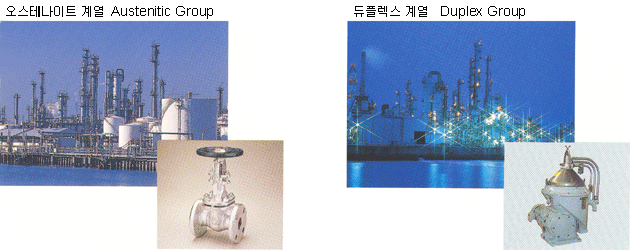
Austenitic Group
The typical grade of the austenitic group is 18Cr-8Ni SUS304.
This group features superb ductility, toughness, and excel in cold workable and weldability. It is also provided with great corrosion resistance and very good properties even under low and high temperature environment.
These properties ensure application over extensive fields, ranging from the household appliances to the industrial use including buildings, auto parts, chemical and food industry, as well as unclear power plants and many other plants.
Dulpex Group
The typical grade includes SUS329J1.
The stainless steel of this group comprises a combination of austenitc and ferritic structures. High chromium content ensure very good resistance against pitting corrosion, intergranular corrosion and stress corrosion cracking of this group. Inherently with its higher strength than the austenitic group, this is rarely hardened by heat treatment.
These advantages are effectively employed extensively in chemical, petrochemical and pulp industries.
Ferritic Group
The typical group is the 18Cr SUS430.
The stainless steel of this group is hardly hardened by heat treatment, and can be used as annealed. It is also superior in workability and corrosion resitance to martensitic group, and its weldability is relatively very good. Because of this advantages, these products are extensively used for applications where normal corrosion resistance is required. Since nickel is not included, they are less expensive than those of the austenitic group. Application is found in kitchen wares, auto parts, water heaters, electric appliances and a variety of plant equipment.
Ferritic group also provides a superb feature of soft magnetic materials. We have successfully combined this feature with powerful corrosion resistance to develop QMR series magnetic stainless steel. These materials are used, for example, to manufacture the solenoid valves for hydraulic and air compressors and mechatronics-related parts.
Martensitic Group
Typical grades of this group are 13Cr SUS410 and 403.
The stainless steel of this group does not include nikel, so it is less expensive. Sicne it hardens by quenching, a great variety of mechanical properties are obtained by a combination of the chemical composition and heat treatment condition. These advantages ensure an extensive range of applications. It is mainly employed for machine structural parts requiring high strength, corrosion resistance, and heat resistance, typically exemplified by shafts, bolts, valves, nozzles, turbine blades, etc.
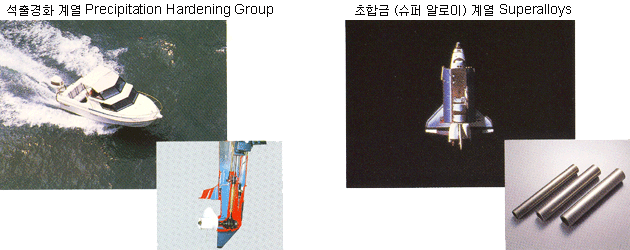
Precipitation Hardening Group
Precipitation hardening elements such as aluminum and copper have been added, besides such major elements as chromium and nikel.
As annealed condition, the product is very good in cold workability, and is superior in toughness, corrosion resistance and weldability to martensitic product. The product finds its application in the field where these advantages are fully employed; it is used, for example, as springs, hydraulic equipment parts, pump shafts, jet engine parts and structural materials of aircraft and rockets.
Superalloys, Other Newly Developed Alloys
The superalloy features extremely powerful strength and remarkable oxidization resistance under high temperature environment and stress corrosion cracking, pitting corrosion, intergranular stress corrosion.
Sanyo has also developed special alloys which exhibit marvelous performances under the critical environment which defy use of ordinary stainless steel. These alloys are extensively employed in a variety of application fields including chemical, petrochemical, nuclear and aircraft industries.
CHEMICAL COMPOSITION
Austenitic Group
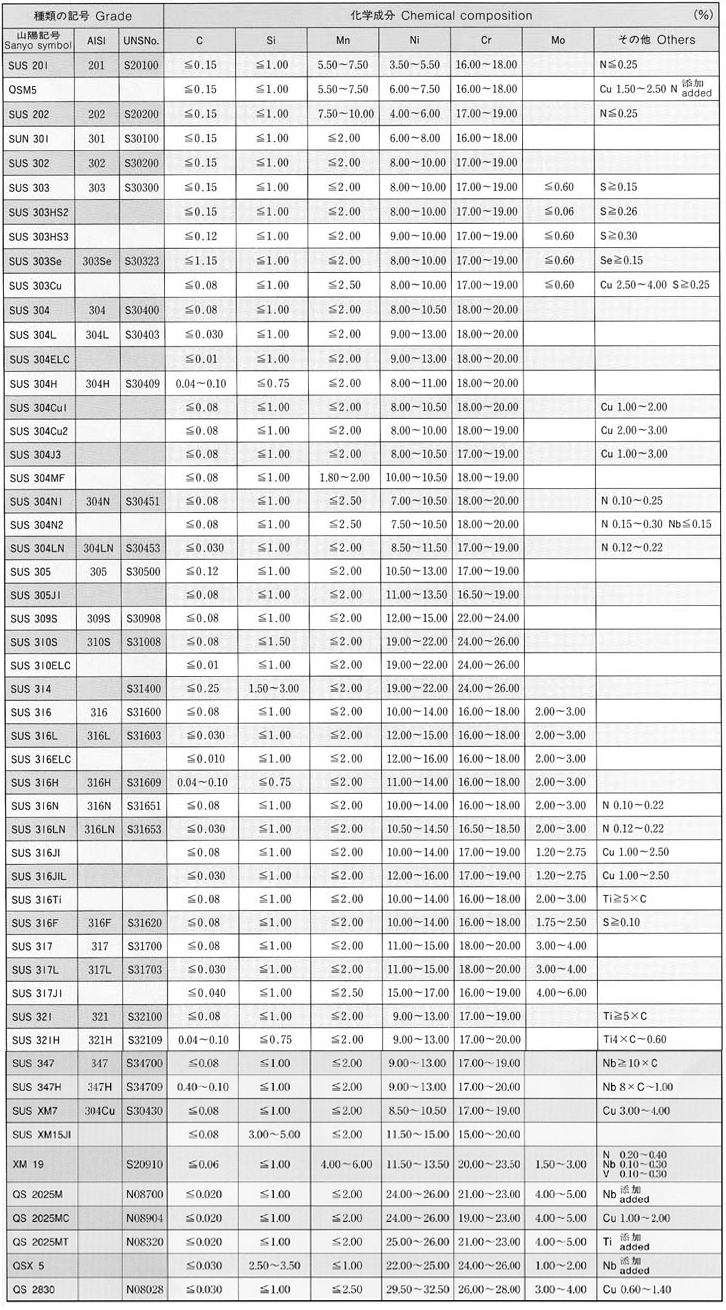
Duplex Group

Ferritic Group
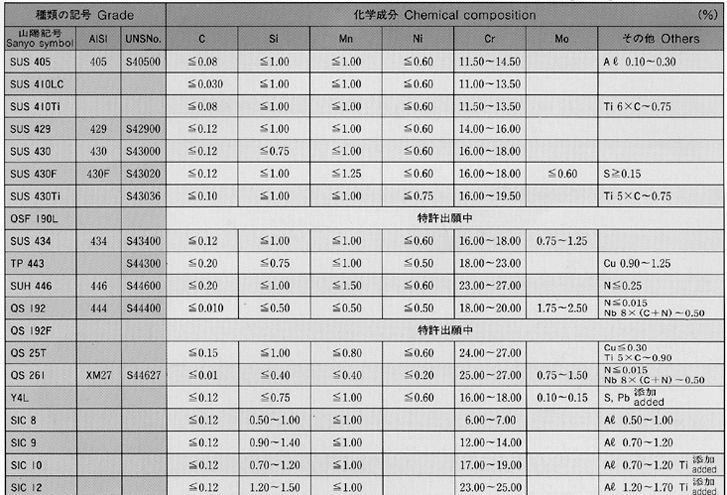
Martensitic Group
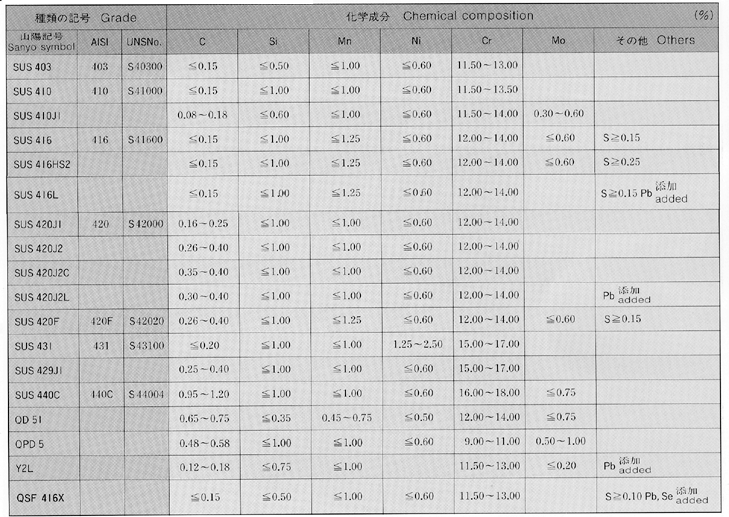
Precipitation Hardening Group

Super Alloys
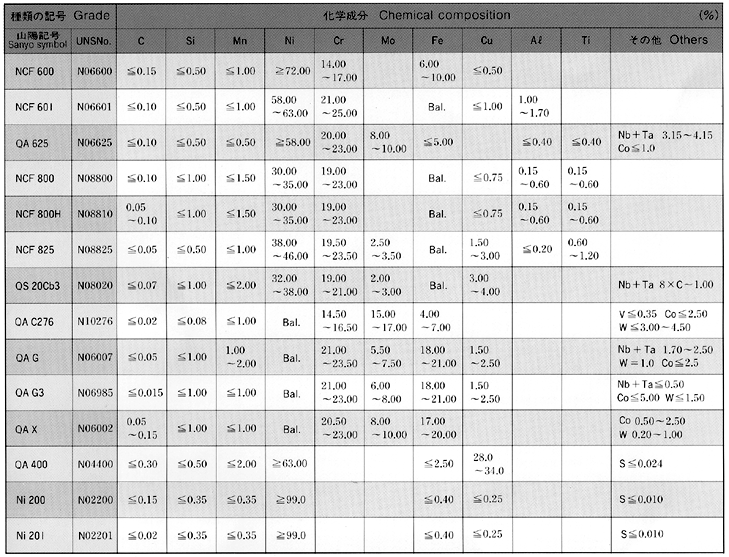
PRODUCT RANGE
Rolled and forged bars

Cold Finished bars

Wire rods
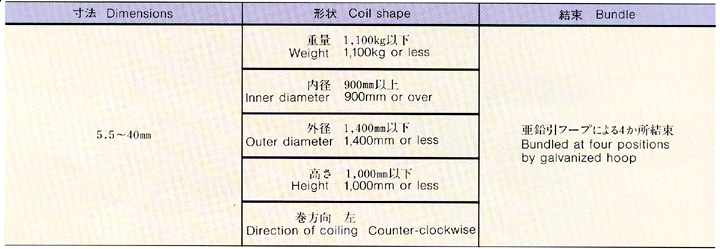
Seamless tube


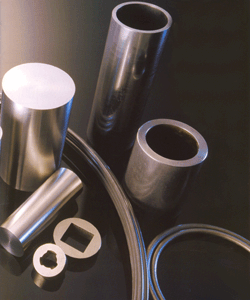
HIGH CLEAN BEARING STEEL - Bearings, for problems awaiting solution since 2500 years ago.
- Tracing back the history to the days of ancient Greece, humans were making efforts to find out better ways to transport massive building stones and stone statues to construct shrines. The solution to this problem was to place rollers under the stone to carry them by sliding. This is, so to speak, an origin of bearings. As centuries rolled by, a prototype of the current ball bearing was born as a shaft bearing of stage coach at the dawn of the Industrial Revolution. The role bearings played as driving force in a new era is quite unfathomable.
- Since then, bearings have been applied to automobiles, industrial machinery and so on. Bearings occupy an important position in the field of super precision equipment and electronic devices. To improve the state-of-the-art technology into further advanced one, bearing steel is still confronted with a great deal of demands. There is an infinite expanse of the area in which Sanyo Special Steel has to contribute.
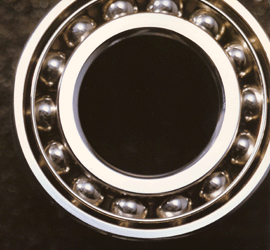
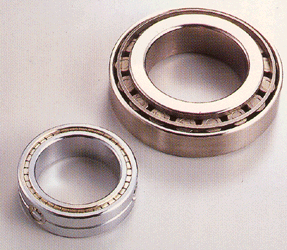
State-of-the-art Technology in Each Process
- The High Clean Bearing Steels are produced in the latest process closely linked with advanced technology to improve the quality characteristics and reliability required by bearing steels. To meet user needs ever changing with times, Sanyo Special Steel has been making steadfast efforts in R & D activities such as basic researches and application studies in search for higher quality. Bearing steel is repeatedly subjected to severe compressive and impact load for a long time in its application. It is essential for bearing steel to have high hardness enough to stand the load as well as a long rolling contact fatigue life.
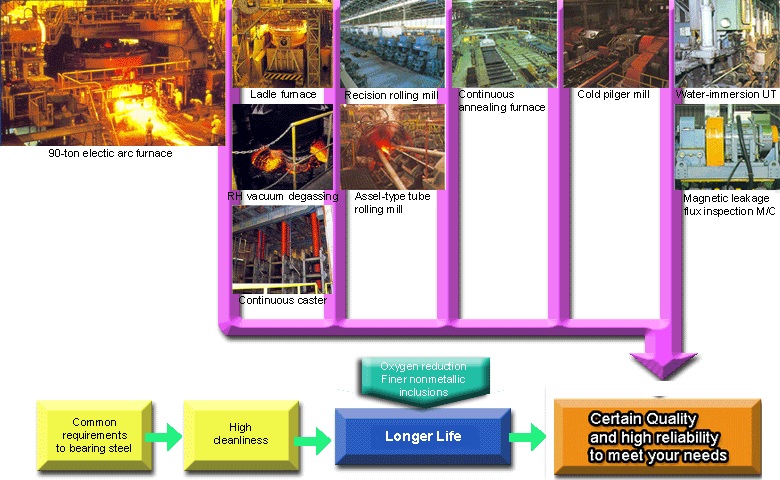
![]()
High Carbon Chromium group(JIS G 4805)
- The steel in this group is relatively inexpensive since they to not contain much expensive alloying elements. High hardness is readily achieved by quenching. Good mashinability is assured by spherodized annealing of the material. Hardenability increases in the order of SUJ1<2<4<3<5, which implies appropriate steel grades for different dimensions and wall thickness of bearings.
| Chemical Composition | |||||||
| Grade | C | Si | Mn | P | S | Cr | Mo |
| SUJ1 | 0.95~1.10 | 0.15~0.35 | < 0.50 | < 0.25 | < 0.25 | 0.90~1.20 | - |
| SUJ2 | 0.95~1.10 | 0.15~0.35 | < 0.50 | < 0.25 | < 0.25 | 1.30~1.60 | - |
| SUJ3 | 0.95~1.10 | 0.40~0.70 | 0.90~1.15 | < 0.25 | < 0.25 | 0.90~1.20 | - |
| SUJ4 | 0.95~1.10 | 0.15~0.35 | < 0.50 | < 0.25 | < 0.25 | 1.30~1.60 | 0.10~0.25 |
| SUJ5 | 0.95~1.10 | 0.40~0.70 | 0.90~1.15 | < 0.25 | < 0.25 | 0.90~1.20 | 0.10~0.25 |
| Grade | Characteristics | Application |
| SUJ1 | This is usually replaced by SUJ2 because of poor hardenability due to low Cr content. | Ball or roller with a diameter of 7mm or less. |
| SUJ2 | Representative grade in high carbon chromium group. It accounts for over 90% of this group. | Ussed for almost all the balls and rollers having a diameter of 25mm or less and races having a wall thickness of 25mm or less. |
| SUJ3 | Higher intermediate hardenability between SUJ2 and SUJ3 | Used for balls and rollers having a diameter of 25mm or more, and races having a thick wall. |
| SUJ4 | Having intermediate hardenability between SUJ2 and SUJ3 | Bearings having dimensions between SUJ2 and SUJ3 ones. |
| SUJ5 | Increased hardenability by addition of Mo to SUJ3 |
Used for large diameter balls and rollers and heavy-wall races where use of SUJ3 will result in insufficient core hardness after heat treatment |
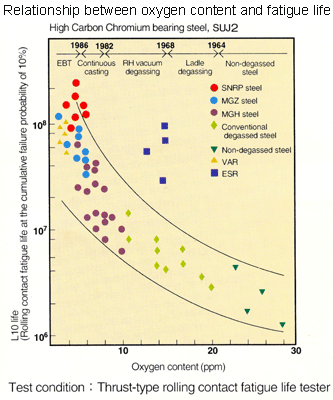
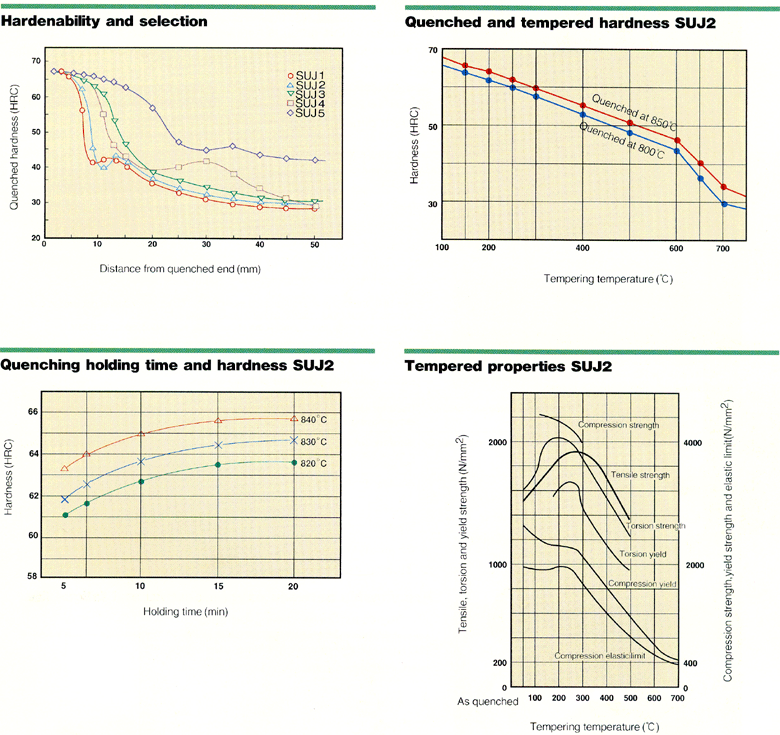
| Heat treatment conditions and hardenss | |||||
|
Grade |
Normalizing(℃) |
Annealing(℃) |
Quenching(℃) |
Tempering(℃) |
Quenched and tempered hardness (HRC) |
|
SUJ1 |
840~900 | 760~800 | 780~820 Water cooling | 150~180 | > 61 |
|
SUJ2 |
840~900 | 760~800 | 800~840 Oil cooling | 150~180 | > 62 |
|
SUJ3 |
840~900 | 760~800 |
790~830 Oil cooling |
150~180 | > 63 |
|
SUJ4 |
840~900 | 760~800 |
800~840 Oil cooling |
150~180 | > 63 |
|
SUJ5 |
840~900 | 760~800 |
790~830 Oil cooling |
150~180 | > 63 |
- Case hardening alloy steels
- In addition to the
most common high Carbon Chromium types, bearing steels include case hardening
alloy steels and corrosion and heat resistant steels.
- When case-hardening alloy steels are carburized and hardened, the bearings exhibit equivalent surface hardness and wear resistance to those of high carbon chromium bearing steels with relatively soft and tough core.
- High-Ni case hardening alloy steels are used for large-sized thick-walled bearings such as those for rolling mills where both high hardenability and impact toughness are required.
- SCr420, SCM420, SNCM220, SNCM420, SNCM815.
- Corrosion and heat resistant steels
- Stainless bearing steel are used in the corrosion environment, highly oxidizing environment where lubricants cannot be used such as in chemical and food industries, or for medical appliances.
- Heat resistant steels are used for high temperature bearings. After long-time exposure to high temperature, its hardness does not significantly decrease with good dimensional stability and long rolling contact fatique life.
- SUS420J2, SUS440C, 440M, QD51, M50
| Chemical composition | ||||||||||
| Grade | C | Si | Mn | P | S | Ni |
Cr |
Mo | W | V |
| S53C | 0.50~0.56 | 0.15~0.35 | 0.60~0.90 | < 0.030 | < 0.035 | - | - | - | - | - |
| SCr420H | 0.17~0.23 | 0.15~0.35 | 0.55~0.90 | < 0.030 | < 0.030 | - | 0.85~1.25 | - | - | - |
| SCM420H | 0.17~0.23 | 0.15~0.35 | 0.55~0.90 | < 0.030 | < 0.030 | - | 0.85~1.25 | 0.15~0.35 | - | - |
| SNCM220H | 0.17~0.23 | 0.15~0.35 | 0.60~0.95 | < 0.030 | < 0.030 | 0.35~0.75 | 0.35~0.65 | 0.15~0.30 | - | - |
| SNCM420H | 0.17~0.23 | 0.15~0.35 | 0.40~0.70 | < 0.030 | < 0.030 | 1.55~2.00 | 0.35~0.65 | 0.15~0.30 | - | - |
| SNCM815 | 0.12~0.18 | 0.15~0.35 | 0.30~0.60 | < 0.030 | < 0.030 | 4.00~4.50 | 0.70~1.00 | 0.15~0.30 | - | - |
| M50(AISI) | 0.75~0.85 | 0.20~0.60 | 0.15~0.35 | 0.030~0.060 | 0.030~0.060 | 3.75~4.50 | 4.00~4.45 | - | 0.90~1.10 | |
| T1(AISI) | 0.65~0.80 | 0.20~0.40 | 0.10~0.40 | < 0.030 | < 0.030 | 3.75~4.50 | - | 17.25~18.75 | 0.90~1.30 | |
| SUS440C | 0.95~1.20 | < 1.00 | < 1.00 | < 0.030 | < 0.030 | 16.00~18.00 | < 0.75 | - | - | |
![]()
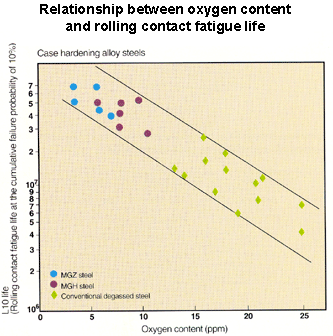
| Table of Comparision with JIS | ||||||
|
JIS |
AISI, SAE | ASTM | BS | DIN | GOST | ISO |
|
SUJ1 |
51100 | - | - | - | - | - |
|
SUJ2 |
52100 | - | 535A99 | 100Cr6 | IIIX15 | 1 |
|
SUJ3 |
- | A485Grade1 | - | - | - | 2 |
|
SUJ4 |
- | - | - | - | - | - |
|
SUJ5 |
- | - | - | - | - | - |
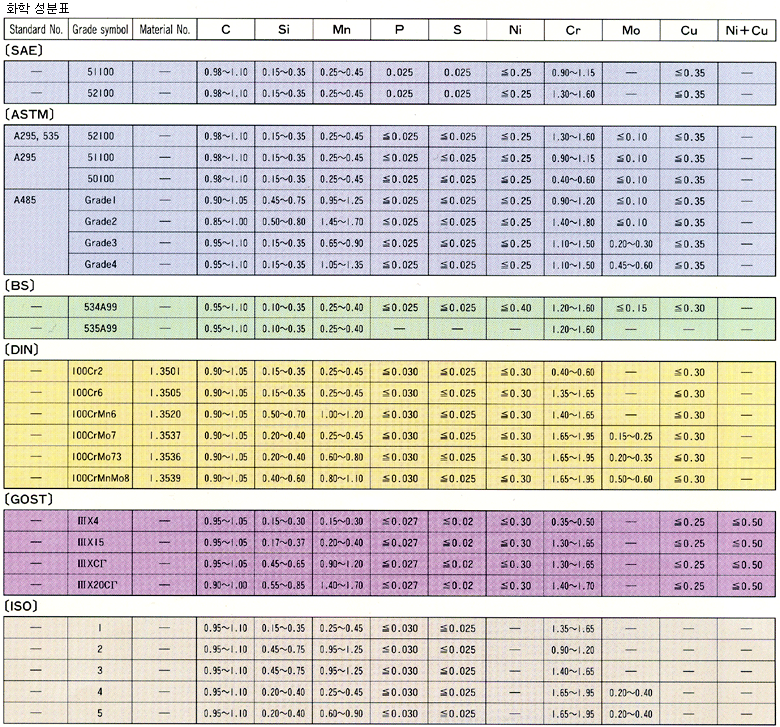
|
Hot rolled bar |
|
|
Diameter |
Length |
| 13~210mm | 3~7m |
|
Forged Bar |
|
|
Diameter |
Length |
| 120~850mm | 2~9m |
|
Cold finished bar |
|||
|
Diameter |
Finished diameter (mm) | Length(m) | Remarks |
| Turned | 70 ~ 830 | 1.0 ~ 9.0 | Bar weight < 13 tons |
| Peeled product | 10 ~ 205 | 3.0 ~ 7.0 | |
| Cold drawn | 6 ~ 75 | 3.0 ~ 6.0 | |
| Centerless ground | 4 ~ 80 | 2.0 ~ 4.0 | |
|
Super-precision rolled bar |
||
|
Diameter |
As hot rolled(®) |
Heat treated |
| 16 to 60 inclusive | + 0.1 mm | + 0.15mm |
| over 60 to 85 inclusive | + 0.17 % | +(0.17% + 0.05mm) |
|
Wire rod |
|
|
Diameter |
Coil Weight |
| Ø5.5 ~ 40mm | 2t or 1t |
|
Specification of wire rod |
||
|
Weight |
1000, 2000kg | |
| Inner diameter | > 1000mm | |
| Outer diameter | > 1400mm | |
| Height | < 900mm | Coil weight 1t |
| < 1800mm | Coil weight 2t | |
| Coiling direction | Counter clockwise | |
|
Wire |
|
|
Diameter |
Coil Weight |
| Ø4.4 ~ 20mm | 1t |
|
Wire specifications |
|||
|
Diameter |
Outer diameter (mm) | Inner diamter(m) | Height |
| 4 to 4.5 inclusive | 625 ~ 825 | 390 ~ 590 | < 900mm |
| over 4.5 to 8.9 inclusive | 800 ~ 1000 | 520 ~ 720 | < 900mm |
| over 8.9 to 13.5 inclusive | 1050 ~ 1250 | 745 ~ 945 | < 900mm |
| over 13.5 to 20.0 inclusive | 1155 ~ 1355 | 870 ~ 1070 | < 900mm |
|
Cut ring |
||||
|
Production process |
Outer diameter (mm) | Wall thickness(mm) | Width(mm) | |
| Seamless Tube |
Cut |
60~170 | 5~30 | > 25 |
|
Cut ▶ Outer diameter sizing |
60~170 | 5~30 | > 25 | |
|
Cut ▶ Cold roll forming |
75~250 | 5~25 | 20~100 | |
|
Forged ring |
|||
|
|
Outer diameter(mm) | Inner diameter(mm) | Width(mm) |
| Forged ring | 30 ~ 80 | > 10 | 10 ~ 45 |
| Cold roll formed | 40 ~ 120 | > 15 | 10 ~ 45 |
HEAD OFFICE & WORKS
3007 Nakashima, Shikama-ku, Himeji-shi, Hyogo 672-8677 Japan
Tel(+81) 792-35-6143, Fax (+81) 792-33-1005
